Trivia Browser
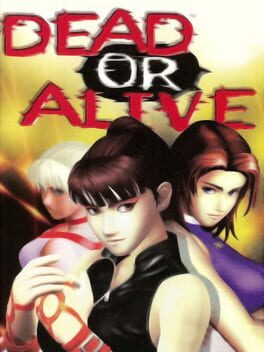
▲
1
▼
Bayman's character and fighting style were based on real-life Russian sambo wrestler and former military officer, Volk Han.
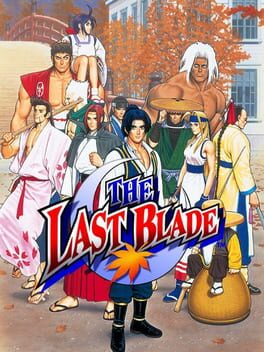
▲
1
▼
Shinnosuke Kagami was modeled after the characters Hiko Seijuro from Rurouni Kenshin, and Shinobu Sensui from Yu Yu Hakusho. The visual design was inspired by the former, and the overall character was based on the latter.

▲
1
▼
Both Zanetsu and Shikyoh are based on the character, Udo Jin-e from Rurouni Kenshin. Zanetsu was inspired by the design, while Shikyoh was inspired by the character and personality.

▲
1
▼
Lee Rekka is based on Jet-Li and his portrayal of real-life Qing Dynasty martial artist, Wong Fei Hung, from the 1991 film Once Upon a Time in China. His real name, Lee Cheng Long, is a reference to one of Jackie Chan's former stage names.

▲
1
▼
Hyo Amano is modeled after the character Kumo, the protagonist from the 1973 manga series Haguregumo.

▲
1
▼
The design of the game was created as a homage to Nobuhiro Watsuki's Rurouni Kenshin/Samurai X series, featuring characters and techniques based on the manga series. This choice was done out of appreciation for much for Watsuki taking inspiration from SNK's Samurai Shodown series.
Franchise: Kingdom Hearts
▲
1
▼
The games' real-time action platforming aspect (in contrast to the turn-based combat of previous Square RPGs) came from a desire by series creator Tetsuya Nomura and others at Square of wanting to make a game extremely similar to and as thrilling as Super Mario 64 after they played that game and were enamored by it. However in order to make the concept stand on its own two feet, they decided to use Disney properties (which made Nomura in particular even more excited and obsessed with the project) as they believed Disney was the only thing that could compete with Nintendo and Mario.

▲
1
▼
When coming up with a name for the game and eventual series, the developers were attracted to the name "Kingdom" because, to Nomura and his team, the game's iconic premise of the different Disney movies' stories being rendered as "Worlds" for the player to visit reminded them of Disney's theme parks, such as the Magic Kingdom and Disney's Animal Kingdom, which are segmented into different "lands" or areas for visitors to explore. However, Square had difficulty in securing the name "Kingdom" alone, so they decided to add the word "Hearts" to it because such entities played an important role in the lore of the game and series.

▲
1
▼
Disney heavily restricted the use of Mickey Mouse in the game especially as the central character like Square initially wanted. This was because Disney was nervous about the success of the game and did not want its possible failure leaving a black mark on the company and its mascot. Tetsuya Nomura stated that these contractual restrictions went so far as to have Disney allow Mickey to only make a minor cameo appearance (such as "in the background of a crowd" as Nomura put it). Spoiler:Nomura and his team got around this by having Mickey have an extremely important but brief role at the end of the game in the form of Mickey helping Sora close the Door to Darkness so no more Darkness gets out of it, separating the two. King Mickey even appears mostly in silhouette in this scene. When the first Kingdom Hearts became a humongous success for both Disney and Square, the former allowed the game developers to feature their mascot in a much more prominent role in the franchise from then onward.
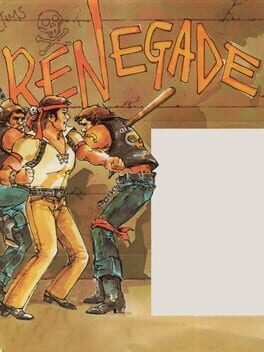
▲
1
▼
The original Japanese version of the game was partially inspired by the films by Hong Kong action star and martial artist, Bruce Lee. The creator combined elements from Lee's Enter the Dragon with that of his own life to create the game's concept.
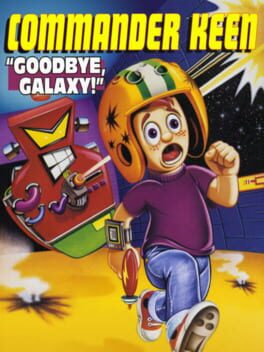
▲
2
▼
 One of the enemies in the "Secret of the Oracle" episode, Dopefish, was a "stupid little fish" created by the game's designer Tom Hall and described in-game as "the second-dumbest creature in the universe" (in reference to the dumbest creature in the universe, the Ravenous Bugblatter Beast of Traal from Douglas Adams' "The Hitchhiker's Guide to the Galaxy" franchise), and has since gone on to develop a cult following and become one of the biggest recurring in-jokes in the video game industry due to the sheer amount of games it has made appearances in (a large chunk of which having Tom Hall's involvement).
One of the enemies in the "Secret of the Oracle" episode, Dopefish, was a "stupid little fish" created by the game's designer Tom Hall and described in-game as "the second-dumbest creature in the universe" (in reference to the dumbest creature in the universe, the Ravenous Bugblatter Beast of Traal from Douglas Adams' "The Hitchhiker's Guide to the Galaxy" franchise), and has since gone on to develop a cult following and become one of the biggest recurring in-jokes in the video game industry due to the sheer amount of games it has made appearances in (a large chunk of which having Tom Hall's involvement).As of October 2021, Dopefish has made known appearances in Wacky Wheels, Rise of the Triad, Duke Nukem 3D, Shadow Warrior, Quake, Quake II, Quake III Arena, Jazz Jackrabbit 2, SiN, Descent 3, Battlezone, Kingpin, Daikatana, Anachonox, Max Payne, Hyperspace Delivery Boy, Commander Keen (2001), Return to Castle Wolfenstein, Eternal Daughter, Hitman 2: Silent Assassin, Red Faction, Congo Cube, The Frozen Throne expansion to Warcraft III: Reign of Chaos, SiN Episodes: Emergence, Chili Con Carnage, TAGAP: The Apocalyptic Game About Penguins, Fortress Forever, OFF, Dystopia, Deus Ex: Human Revolution, Pettington Park, Rocketbirds: Hardboiled Chicken, Warsow, Bombshell, Doom (2016), Wolfenstein II: The New Colossus, Ion Fury, and Doom Eternal.
Beyond video games, Dopefish notably made a cameo appearance in the animated series "Tiny Toon Adventures" in the 1992 episode "Toon TV" during the song "Toon In, Toon Out", which aired less than a year after the release of Commander Keen in "Goodbye, Galaxy!". Dopefish also cameoed in "Lakewood Plaza Turbo", the pilot episode to the 2017 animated series "OK K.O.! Let's Be Heroes".
The Official Dopefish Home Page:
http://dopefish.com/fishinfo.html
Tiny Toon Adventures - "Toon In, Toon Out":
https://www.youtube.com/watch?v=kKWD3JaCSO8#t=126
OK K.O.! Let's Be Heroes - Lakewood Plaza Turbo:
https://www.youtube.com/watch?v=SM6W8Oj-L3c#t=98
http://dopefish.com/fishinfo.html
Tiny Toon Adventures - "Toon In, Toon Out":
https://www.youtube.com/watch?v=kKWD3JaCSO8#t=126
OK K.O.! Let's Be Heroes - Lakewood Plaza Turbo:
https://www.youtube.com/watch?v=SM6W8Oj-L3c#t=98

▲
1
▼
The game's setting and art style was inspired by the Mad Max films and the manga and anime series Fist of the North Star.

▲
1
▼
The game's title, graphics, and story were completely changed for the international version. The original Japanese title, "Nekketsu Kōha Kunio-kun", was changed to "Renegade". The retooled western version took inspiration from the films Enter the Dragon and moreso The Warriors, and the story altered from a high school student rescuing his friend, to be about an adult man rescuing his girlfriend.

▲
1
▼
The original Japanese version of the game was partially inspired by the films by Hong Kong action star and martial artist, Bruce Lee. The creator combined elements from Lee's Enter the Dragon with that of his own life to create the game's concept.

▲
1
▼
The original Japanese version of the game is a semi-autobiography based on the teenage high school years of the creator, Yoshihisa Kishimoto, with the protagonist Kunio-kun loosely based on himself. A self-proclaimed rebellious youth, Kishimoto says he got into fights in school on a daily basis, which, he explains in retrospect, was partially the result of a rough break-up. "There were family reasons as well, but there was a girl and she dumped me, which pulled the trigger," he says.

▲
1
▼
Since Takuma's design from Art of Fighting 2 was too similar to Daimon, he was given upper body clothing to make him more visually distinct.

▲
1
▼
Ryo's design is based on Ryu from Street Fighter. Since the game's creator, Takashi Nishiyama, also created the first Street Fighter game when he was employed at Capcom, the character was made as a homage to the series he created.

▲
1
▼
Blacker Baron's design and personality are largely based on Bob Sapp, an American wrestler that was popular in Japan. The design of his weapon "Super Sexy Fists of Fire" is based on American rapper, Ghostface Killah, whose rap persona is a powerful crime lord and pimp.
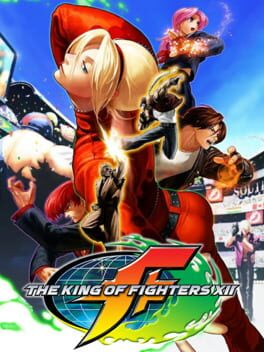
▲
1
▼
 Athena's design was drastically changed for this installment. According to SNK illustrator Eisuke Ogura, Athena's character design was revised many times over until the design that appears in the final game was reached. When drawing her, he kept getting comments like, "She let her smile!" or "Make her legs fatter!" or simply "Fatter!"
Athena's design was drastically changed for this installment. According to SNK illustrator Eisuke Ogura, Athena's character design was revised many times over until the design that appears in the final game was reached. When drawing her, he kept getting comments like, "She let her smile!" or "Make her legs fatter!" or simply "Fatter!"

▲
1
▼
According to series composer Yoko Shimomura in a KH Ultimania interview with the game's sound team, they believed the operatic song "Destati" was "cursed":
"In the beginning and ending of the game, there is a song with a chorus. That chorus is a phrase that expresses the dark side of Kingdom Hearts, and it was used in several songs. However, once we tried loading the chorus data in when we were creating the songs, something bad would happen. The worst thing that happened was when the electricity to the building was cut off. (laugh)"